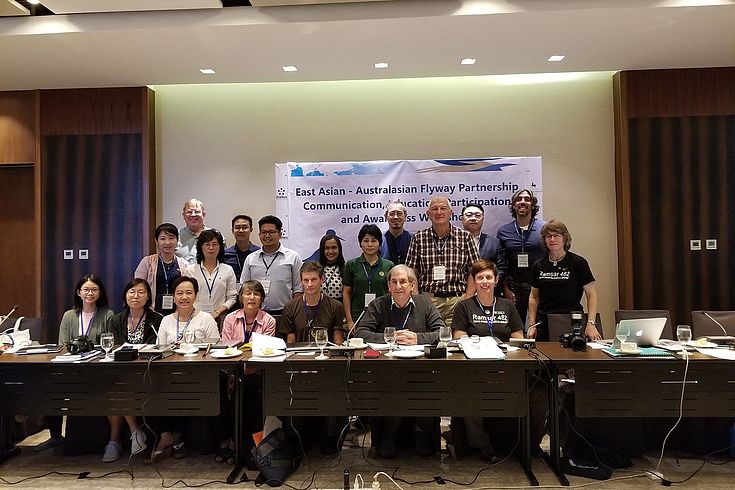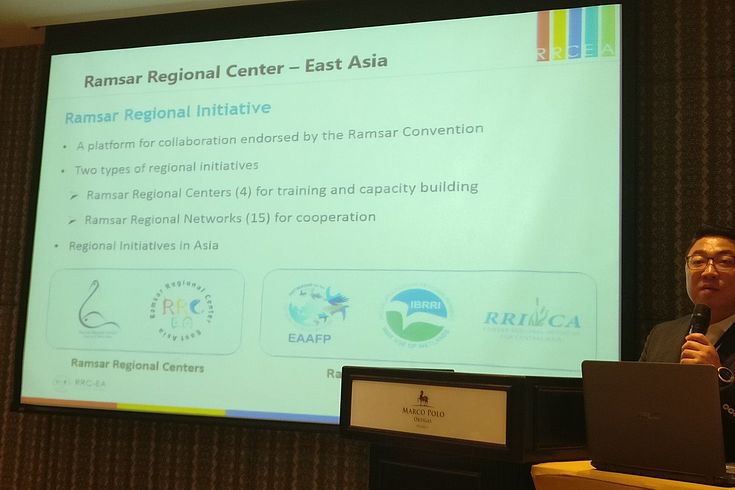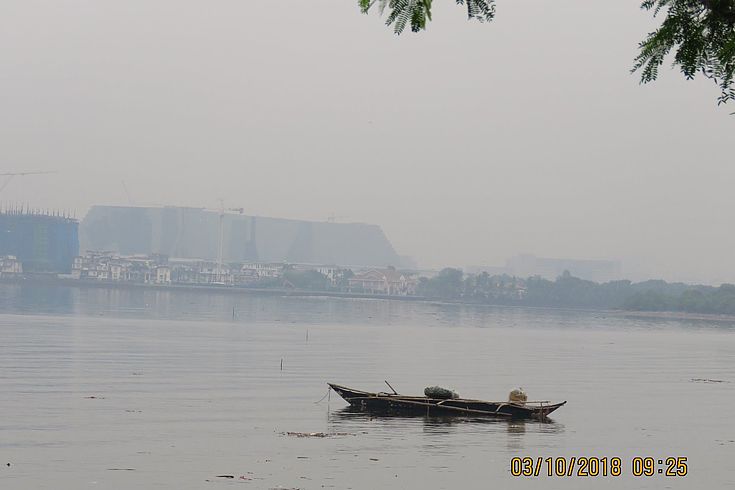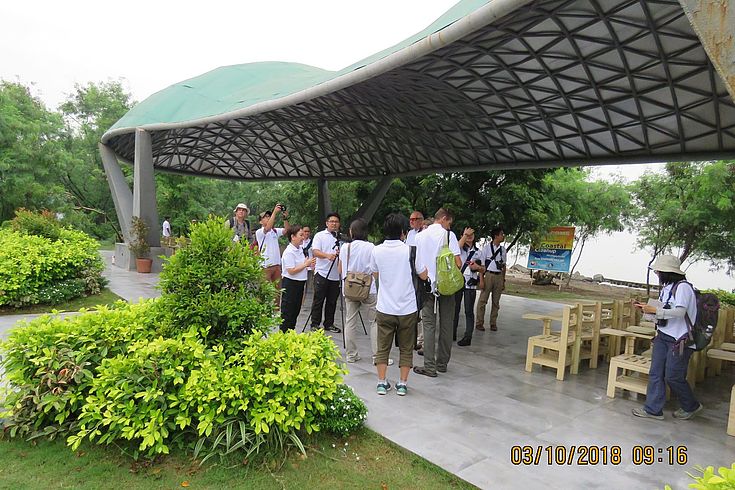Workshop
Together for Wetland Protection
Participants of the CEPA Workshop in Manila
HSS
This is why the CEPA workshop of the East Asian Australasian Flyway Partnership (EAAFP), dedicated to the protection and birds and their habitats in the Asia-Pacific area, in Manila in early October was very timely. Lew Young, chief executive of the EAAFP, could welcome 30 participants from over 10 countries. Sandra Hails-Downie, head of the CEPA working group of the EAAFP, pointed out that for the first time, CEPA staff from all across the flyway was together to discuss successful cases and challenges of teaching and explaining about migratory birds and their habitats. Hanns-Seidel-Foundation Korea, which is part of the EAAFP, which consists of governmental and non-governmental partners, participated, together with delegates from North Korea’s Ministry of Land and Environment Protection (MoLEP) and National Conservation Union of Korea, partly sponsored by HSF.
A presentation by Suh Seung-Oh, head of the Ramsar Regional Center in Suncheon, South Korea
HSS
On the first day of the workshop, experiences from a range of countries and regions, from New Zealand and Australia to Singapore, Myanmar and Russia and Alaska, was presented. The second day began with a field trip to the Las Piñas-Parañaque Critical Habitat and Ecotourism Area (LPPCHEA), a coastal wetland in Manila Bay situated within the metropolis of Manila, comprising two interconnected, mangrove-covered islands, shallow lagoons and coastline. Since 2013 the site is a Ramsar site (a wetland of international importance), among others as a major wintering site of black-winged stilts. The site comprises of a wetland (battling with a waste problem from upstream cities in the Manila metropolitan region) hosting waders, egrets, terns, and mangrove forests with endemic and migratory bird species.
Manila bay - highly disturbed and having a serious litter problem, but the wetland management tries hard to improve the situation
HSS
Afterwards, CEPA strategies of different countries and wetlands were discussed and plans for the future presented. Activities reach from outreach activities to citizens, development of educational material, bird and wetland festivals, wetland educational courses to art classes and the production of multimedia content on wetlands. Also, the future flyway-wide CEPA strategy for the next ten years was discussed, which will be part of the EAAFP strategic plan 2019-2028 to be discussed at the EAAFP MOP (Meetings of partners) in China in December 2018.
At the wetland center
HSS
The last day of the workshop was devoted to group work on developing a flyway-wide CEPA strategy as well as bilateral linkages between sites and regional linkages for certain migratory bird species, like Black-Faced Spoonbills or cranes. Already now, certain tagged birds (birds carrying tiny transmitters) generate huge interest among target groups like school children, people, but also scientists. Among others, ways to combine count data and to disseminate innovative CEPA approaches were discussed. Birds on the Asian-Pacific Australasian Flyway face some challenges in many sites, like hunting, disturbance from development or littering (microplastics in the seas), and some more specifically. It is important to educate about these dangers on the migration route along the flyway. Reaching out to wide audiences as well as more targeted group is a challenge all partners along the flyway have. To work together on these issues was a consensus reached at the end of the workshop. The next big meeting of the EAAFP will be the 10th Meeting of the Partners (MOP) in China in December 2018.




